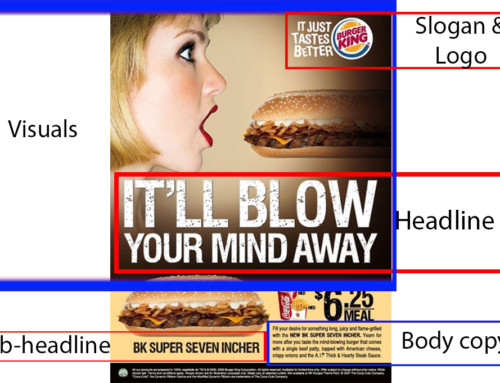I always hear people talking about their business philosophy. They say business philosophy this, business philosophy that. The term is thrown around like confetti at business meetings, bars and the likes. What I get when people are talking about their business philosophy is that they will be trying to talk about the approach that they have to business. What I have also picked is that various business people fall into one of a number of approaches. My worry has been that most business people stumble upon a business philosophy as opposed to actually selecting it. This has the drawback of ensuring that businesses do not realise their full potential as they do not explore an alternative business philosophy when the one they are using fails to work. So what I am going to do is discuss the various types of business philosophy and to some extent their pros and cons. While you read I would like you to do the following if you do not mind:
- Identify the business philosophy that you fit in from the philosophies that I shall talk about
- Decide whether or not you like the business philosophy that you are currently using based on what you shall read
- Decide which business philosophy is the best, and if you would like to make the required changes in order to use that approach and thus reap more from your investment
All these approaches have different implications as to how you will then run your business, especially your strategy, so choose wisely.
Mass Production Strategy
Innscor’s Fish Inn’s tagline is, ‘It’s catchy!’ I am thinking that is because fish are ‘caught’. Your thoughts?
An example of a company which follows this example is Innscor. If you go to any of their outlets you will get food with a consistent taste, packaging, and oiliness! This consistency makes the food predictable which is an advantage of mass production because once you like it, you like it and you will keep on buying. Another way to know if you are into mass production is if your distribution network is vast. You can find Chicken Inn even in Chivhu and other locations. A big distribution network is good in that it makes your brand recognisable everywhere. If Tonderai from Chivhu comes to Harare he will probably look for Chicken Inn because that is all he knows. If you see yourself managing to sell low priced goods at prices lower than that of the competition you are probably benefiting from economies of scale (EOS). EOS comes about when you produce so much output that the cost per unit produced is reduced. If one machine fried 1000 chickens a day it will cost more to operate than a machine which fries say 3000 chickens a day, that sort of thing. To sum it up if you produce many products that are similar in nature, at a low cost, that are widely distributed, using cheap labour and most importantly gaining market share mostly as a result of the availability of your product in several locations you are in the mass production business.
Another perk of using the mass production strategy is that the barriers to entry are very high. Imagine how much money Innscor has spent setting up their business. The stores, the branding, the equipment, the staff etc. The cost of setting up has probably been the main reason that Innscor has enjoyed a monopoly in the fast food industry, until recently, when Chicken Slice showed up. Chicken Slice did not need to do much in order to give Innscor a run for its money. They just needed to be present in the market, with the same prices and distribution levels. The chicken is the same, and so are the chips, the service, everything. This is the major drawback of using this strategy. The fact that you concentrate on distribution only leaves you with an Achilles heel, always.
So, is this your business philosophy? One which is good but is so prone to attack? Let us move on to the next type of strategy.
Product Centered Strategy
The best knows no alternative? Global sales volumes beg to differ with that notion
There are companies that claim that their products are the best, and Mercedes-Benz is one of them. Their tagline says it all does it not? Mercedes-Benz probably follows the Product Centered Strategy because they believe in producing a product of superior quality, performance with innovative features etc. They also seem to believe that the quality of their products will play the biggest part in bringing the customers in, and it does. People follow Mercedes-Benz like the mice followed the Pied Piper. One of the benefits of producing superior products is you actually get to spend less on marketing and advertising that product. Look at how many times the likes of Nissan and Volvo have to advertise on DSTV. You see a Mercedes advert (on TV) once in a blue moon. Word of mouth will usually do the trick for you when you are using this strategy and as you know word of mouth is both cheaper and more effective than advertising. My first car was (and still is) a Mercedes-Benz. I bought it because when I was growing up I was told that Mercedes-Benz is the ultimate in luxury – word of mouth. I am sure you have come across quotations which go like, ‘Be like a Mercedes-Benz, you do not need to prove yourself…’ bla bla bla. This is the brand equity that you derive when you are producing a superior product. When you are producing a superior product you also do not have to spend as much as your competitors on research etc. as you seldom need to find out what customers need. Customers view you as an opinion leader and are ready to lap up whatever you dish out just like puppies. Did people know that they needed a streaming service like iTunes before Apple discovered this latent need and made people ‘realise’ that they need such? This all leads to high profit margins because of low operating costs in relation to the high prices that one can charge for a product.
The problem with using the Product Centered Strategy is that it leaves a lot of gaps that the competition can penetrate through costing you market share as your very own customers can be lassoed using other strategies. A lack of research can also make you miss ‘customer centered’ opportunities for growth as you continuously walk down the familiar, beaten path. BMW used research to discover and appeal to the younger section of Mercedes-Benz’s clientelle. They created a car for the young professionals and the older generation who were young at heart. They created modern luxury sports cars while Mercedes remained old fashioned. You can see it in the looks, Beemers are more sporty looking and come with options of bright colours that appeal to the above mentioned clusters while Mercedes-Benz has maintained (to a greater extent) it’s elegance, until recently. This probably accounted for Daimler LG losing the global sales title to BMW and Audi landing it in third position.
The Mercedes-Benz tagline – ‘The best knows no alternative’ is a product centered tagline it does not speak about the people but tells people what Mercedes-Benz thinks about their own product. This tagline tells me that Mercedes-Benz is the best but it does not tell me what the car will do for me as a person
The BMW tagline – ‘Sheer driving pleasure’ talks to the people. It is not talking about the car but about what the car will do for you and that is provide ‘sheer driving pleasure’. This has allowed BMW to create a product which might not be as superior as Mercedes-Benz when it comes to build and specifications but one that can beat the so called best when it comes to what matters, the bottom line.
Is this your business philosophy? One where you concentrate on creating a superior product based on your beliefs more than those of the customers? This approach can take you far but it will leave a lot of room for competitors to penetrate through.
The Aggressive Selling Approach
According to Nyaradzo Funeral Services I get to contribute money to my favourite soccer tean everytime I pay for a premium subscription. Is there a link between my funeral cover and my favourite soccer team? Food for thought
So, have you ever come across a product which seems like its being sold in the wrong place? You know, the square peg in a round hole type of situation? This ‘sales at all costs’ approach is usually practiced by companies whose products we would otherwise not have considered purchasing if the sales people had not shown up at our doors like the police. Products that come into mind under this category are funeral policies and insurance.
I remember this other day at my workplace a guy from Nyaradzo Funeral Services came through advertising his funeral plans. He told us about the Six Pack Plan (that one stuck). We had not invited him so I guess one of his connections from work had given him the platform. An uninvited guest being so intrusive as to take my time in the office – aggressive selling. More recently I attended a National Vendors Union of Zimbabwe (NAVUZ) meeting and the guys from Moonlight were there selling funeral policies to the vendors. The vendors were there to air their grievances about the City Council etc. but they ended up being told about funeral policies – misplaced advertising. Looking at the image above Nyaradzo have what they call the ‘Score Pack Plan’. Allow me to quote their website, ‘for each premium you make, your nominated soccer club will get paid a certain percentage at no additional cost to YOU’. Now, why would I want (hypothetically) CAPS UTD ‘Ma Kepe Kepe’ to benefit from my hard earned money? I am sure that they would not let me watch a soccer match for free – the fact that the link between a funeral policy and me being a soccer fan seems weak and would not ignite a passion for one to subscribe to the Score Pack Plan so as to help their favourite soccer club is another example of misplaced advertising. If you see yourself using such strategies you are probably using the Aggressive Selling Approach/Strategy.
The fact that people do not actively seek such products makes these types of companies show up at every opportunity and usually they leave a sour taste in people’s mouths. These companies do however, still make quite a lot of money. Not as much as they could though.
Are you rocking in this boat? If so then it is time to make a change. PS: You can still move away from this strategy even if you are selling funeral policies. Read on.
The Marketing Approach
The iPhone 6. It looks like the best phone, feels like the best phone, and sells at the highest price. It provides massive ‘value’ but it is not the best phone. How do you think Apple has managed to get away with this for all this time?
Have you ever come across a company that makes you feel like it reads your mind? A situation where you feel like their products are tailored for you and you only? A product which fits you like a custom made suit? If so then that company is probably practicing the Marketing Approach to business strategy. Such firms tailor their products to your needs (both known and unknown) as opposed to shoving their ideas down your throat. They create products that talk to your inner senses. Owning or using these products can actually represent milestones in your life. These companies are successful because people do not need to be convinced to purchase their products. The products draw you in and sell themselves. When you are using this strategy it is actually more about the senses than the product itself meaning the product does not necessarily have to be the best (technically) on the market or available on a wide scale. Who wants an iPhone? All of you right?
Companies that use this strategy know how to create value, both real value and perceived value. The iPhone is not the best technically but people think it is the best because of the experience that it provides. This sets the iPhone apart from the competition because copying an ‘experience’ is very difficult. The iPhone feels good to the touch, looks good, the user interface is good. The phone itself performs ‘OK’. The MacBook is based on the same strategy. There are much better computers than it but who wants to even admit that? As you can see the strategy was shifted from the product (to a larger extent) to the realm of the senses and psychology. This is making Apple untouchable at the moment.
After creating the value a firm that uses this strategy ensures that it delivers the value in a way that creates a competitive advantage for them. I have been in many places in Zimbabwe that have value but the delivery of the value is flawed. You can walk into a beautiful place like Meikles but a grumpy receptionist can compromise the delivery of the value. Companies that use the Marketing Approach ensure that every touch point is….on point! Take a look at the image below:
Apple’s Customer Service Training manual. It is alleged that this is one of the tools that Apple uses to deliver value to its customers at all of its touch points. Their great customer service is not a fluke, it is a deliberate strategy
Have you ever come across a company that knows how to talk to you in the right way all the time most of the time? (No one is perfect!) A company that makes you feel exactly how you would want to feel when you are dealing with them? If you have come across such a company it might just be using the Marketing Approach to business strategy because such firms know how to communicate value.
So, is your company at this level yet? If not then you still have an opportunity to grow and get a higher rate on your investment right? At this level you can start talking about having loyal customers, lifetime customers and excessive profit margins among other nice things. If you are not at this level yet you have not yet arrived so start working on it. Move up from the product centered, sales centered or the other strategies that we talked about as you will not fulfill your potential there. At those levels you will also still be vulnerable to attack from your competition.
That said, there is yet another level! A level that very few firms are on. At this level you will use strategies that will take you to even greater heights. It also covers some of the weaknesses that are found in the Marketing Approach (as good as it is). I will talk about this level in Part B of this article so stay tuned!
Thanks
Ruvimbo








Thanks again Ruvimbo.
Your article and questions are thought provoking.
Provoking our thoughts in that, I do not think many of us ever ask ourselves whether we are into Mass Production, Marketing, Aggressive Selling or Product Approach. We just go into business.
I went into business to solve an issue of my survival. I had to make some money. What I had were my construction skills. So I put those to use. It was a generalist approach.
Then during my further studies I started meeting terms like the 4 approaches you have shared with us here. This is when I started asking myself what my philosophy was. By the final year of my studies I had decided mine was the Customer Centred Approach. I then chose CRM as one of my electives so as to understand better this route. I had already chosen Project Management (see my triple package below) as my 1st major and marketing as 2nd.
I aim to build a long term relationship with clients via great service. I don’t see this fitting the Marketing Approach smugly. Though some elements of the Marketing Philosophy feature there.
The main difference is on the personalisation of the customer experience. Whereas it was impossible (due to sheer numbers and geography) for Steve Jobs to see each customer and shake their hand; I am able to, because we deal in customised products with very low numbers but very high value. I am also responsible for the CRM portfolio. It is not something delegated to an employee level. This goes to show how serious we are about pampering our customers.
Real estate deals with expensive single products. So even if they are mass-produced like in the case of housing estates, there is always an element of that individuality which I can still perpetrate if I want to follow my customer-centred philosophy. Moreover we still have customised units within this mass housing.
Thus through trial and error I came to know that any other strategy is easy to copy and be replicated by my competition. Customer service also has some art in it. That makes it more difficult to ‘copy and paste’. It therefore gives me competitive advantage. As you said in the case of the iPhone, ‘‘….because copying an ‘experience’ is very difficult….’’
Gaining a competitive advantage is very important in my chosen sector of this vast industry. There are so many people who say they know how to build. Depending on what level one decides to operate in, the barriers of entry are low or high. If you just tell people you are a buider (which I could have continued to do), this conjures up a readily available and easily manipulated individual. But if you offer unique packages like design>build>& project management (like I do), u see the competition thinning quickly. But having said that, I tell myself that what I am doing is still work-in-progress. It needs to be constantly improved on. Thus I am a student of knew knowledge daily.
You are welcome Taurai
I am glad that the article has had that effect on you. As Norman Vincent Peale put it, ‘Change your thoughts and change the world’ Through exploring different ways of thinking we will discover new ways of doing business, new ways of solving our problems, etc.
What I can tell you is that the fact that you are deliberately pursuing a business model is a very good thing because it means that you have control over a lot of outcomes. You will not be one of those businesses who do not even know how they got to make more revenue or why the revenues dropped. You will not be one of those firms who put a 100% weighting on macroeconomic factors as the cause of their success or failure. You will be one of those businesses that will be in control of their micro environment and thus your own destiny. As they say real progress is made when you start focusing on things that you can control (you micro environment) as opposed to concentrating on things that you cannot control (your macro environment). This alone will give you a great advantage over your competition (even those with more resources) as you will be adjusting your sails and navigating through the economic sea. Others will be left to the mercy of the current and just flow with it in whatever direction it takes them.
I like the fact that you have an aspect of customisation. In Harare I have seen quite a number of cluster projects and it seems as if the assumption is that everyone is the same. When I talked to some of my relatives who live in such setups I have discovered that to a great extent they are not satisfied with their investment, especially the women. You know women like to compete and it is hard to do so in a housing estate setup in Zimbabwe as there is no customisation, even at the lowest level. I once asked my aunt if she had been consulted prior to the building of the estate and she revealed that developers do not so such. To that end I am the opinion that some research needs to be carried out before one embarks on such a project, even if the participants of the research are not the final consumers.
Yes indeed copying an experience is very difficult. I like the fact that you are walking on that path because with every action that you take on a daily basis you are slowly opening up the gap on your competition. A billboard, a structure, an advert or materials can be copied easily as it is an open market but what you say to your customers, how your treat them and how you listen to them is not documented or even remembered at times. It does however leave a lasting impression in a place where the competition cannot reach (and copy), and that is the customers’ hearts.
‘Thus I am a student of new knowledge daily’ is a perfect approach. As Steve Jobs said, ‘Stay Hungry. Stay Foolish!’ That way you will always be hungry for new knowledge and staying foolish will always mean that you are willing to learn new things, making you a better person and businessman in the end.